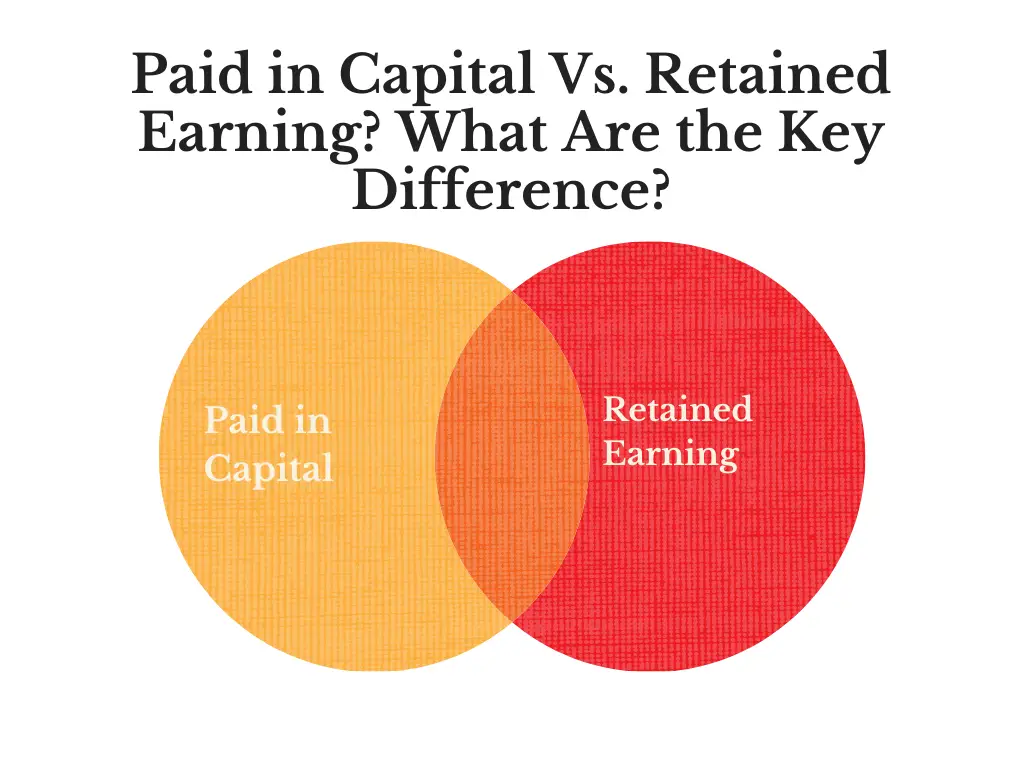For any company, the shareholder’s equity portion of its Statement of Financial Position will consist of different equity instruments and reserves. Among these, the most common are paid-in capital, additional paid-in capital, and retained earnings.
Each of these balances represents a different aspect of the equity of a company. While these are all a part of the equity of a company, there is still some difference between them.
To better understand the similarities and differences between these balances, it is crucial to understand what each of these balances represents. Below is a general description of these balances.

What is Paid-in Capital?
Paid-in capital is a balance is the equity of a company that represents the par value of its issued shares. Every share issued by a company has a par value, which denotes the value of the share set in the corporate charter. That means the par value of a share does not change from one issue to another.
Therefore, the paid-in capital balance only consists of the total par value of all the issued shares of a company. The more share a company issues, the higher its paid-in capital balance is going to be.
Paid-in capital can also exist for the preferred shares of a company. Preferred shares are shares that give the shareholder a preference when it comes to dividends, and in case the company liquidates.
Preferred shares, like ordinary shares, also have a par value or face value, which the company defines beforehand. For all the preferred shares a company issues, it must record the total amount of their par value in the paid-in capital account.
For most companies, issuing shares will also give rise to another balance known as the additional paid-in capital balance. While this balance is closely related to the paid-in capital balance, and often depends on it, it represents a different aspect of equity.
What is Additional Paid-in Capital?
Additional paid-in capital consists of any additional amount above the par value of a share that a company receives for new share issues. The actual price a company charges for newly issued shares will almost always be different from its par value.
The actual price depends on various factors such as market conditions, company performance, environmental factors, etc. The company must split the paid-in capital amount from the total receipt for new shares and record the remaining amount in the additional paid-in capital account.
While additional paid-in capital balance represents a different amount and balance than the paid-in capital balance of a company, both of them are very closely related.
They make up the total equity a company received from its shareholders in exchange for issued shares, also known as contributed capital. There are also some rules and regulations that companies must follow when it comes to paid-in and additional paid-in capital balances.
What is Retained Earnings?
Retained earnings are also a part of the shareholders’ equity of a company. However, retained earnings do not relate to the finance a company generates from its shareholders. Instead, retained earnings represent the internally generated finance of a company that it makes through its operations.
The retained earnings of a company usually comprise of its accumulated profits less any dividends it pays to its shareholders.
A company generates profits through its operations. Sometimes, it may also make a loss instead of a profit. Either way, the retained earnings of a company reflects its performance over its lifetime. Retained earnings is also a type of finance that a company can use in its operations.
It is the lowest cost finance that a company can use since the company generates it internally. However, retained earnings may be finite depending on the resources and performance of the company.
Unlike with paid-in and additional paid-in capital, a company can distribute its retained earnings. Therefore, retained earnings represent the distributable profits of a company. These distributions come in the form of dividends. Every time the company pays dividends to its shareholders, it must deduct them from its retained earnings.
When companies initially start, their paid-in capital and additional paid-in capital balance will exceed their retained earnings balance. However, as they establish themselves and make profits, their retained earnings balance can exceed their paid-in and additional paid-in capital balances.
However, if they make a lot of losses instead of profits, the retained earnings balance may also become negative or go into a deficit. Paid-in and additional paid-in capital balances will never become negative for companies.
Conclusion
Three main balances will exist in the shareholders’ equity of companies including paid-in capital, additional paid-in capital, and retained earnings. Paid-in capital represents the total par value of the issued shares of a company, and additional paid-in capital represents the amount in excess of the par value of shares a company receives.
Lastly, retained earnings represent the total profits minus the total dividends paid by a company. Paid-in and additional paid-in capital are similar and often related to each other. However, they are different from retained earnings.
